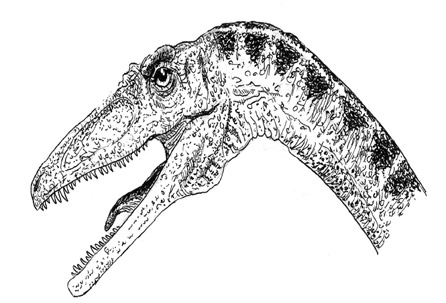Chinese Scientists Announce Discovery of New Theropod Dinosaur Genus
Chinese Academy of Sciences Announces New Genus of Coelophysoidea
A spokesperson, speaking on behalf of the Chinese Academy of Sciences has announced that a new genus of meat-eating dinosaur (theropod) has been discovered in China.
The fossils of this new dinosaur were unearthed at Longshan, Lufeng county in the Yi Autonomous Prefecture of Chuxiong part of Yunnan province, last month. Yunnan province is one of the most southerly of all China’s provinces, it borders Burma, Laos and Vietnam.
Professor Dong Zhiming, regarded by many as the world’s most successful dinosaur hunter of recent years, a researcher at the Chinese Academy of Science’s Institute of Vertebrate Palaeontology and Palaeoanthropology, commented that this dinosaur was relatively small and lived approximately 180 million years ago.
This new dinosaur genus, which has yet to be formally named and described, was at least 1.2 metres in length and would have stood approximately 0.7 metres high. It is a member of the Coelophysoidea; a clade of primitive, fast-running dinosaurs from the Early Jurassic.
An Illustration of a Typical Coelophysoidea Dinosaur

Picture credit: Everything Dinosaur
Members of the Coelophysoidea clade, such as Coelophysis (pronounced see-low-fie-sis) were basal theropods. They had long tails, “s”shaped necks and thin narrow jaws, that were lined with needle-sharp teeth. These small, bipeds had four fingers on each hand (a primitive theropod dinosaur trait), although the smallest digit may have been vestigial. Thanks to the discovery of more than 100 specimens at the world famous Ghost Ranch site (New Mexico), Coelophysis is perhaps, the best known, non-avian dinosaur. A number of fascinating prehistoric animal fossils have been discovered at the Ghost Ranch location.
These have provided scientists with an insight into the rise and diversification of the Dinosauria.
To read more about the recent dinosaur discoveries from the Ghost Ranch site of New Mexico: New Theropod Sheds Light on Early Dinosaur Diversification.
The finding of a relative of Coelophysis in southern China, will help scientists to piece together more information on how dinosaurs evolved and spread around the globe.
Professor Zhiming commented:
“The discovery of the new dinosaur might promote research on the classification and evolution of dinosaurs in China.”
The Chinese scientists intend to study the fossil bones for a little while longer, before officially naming and describing this new dinosaur.
For models and replicas of Early Jurassic dinosaurs including Coelophysis (whilst stocks last): Wild Safari Dinos and Models.

